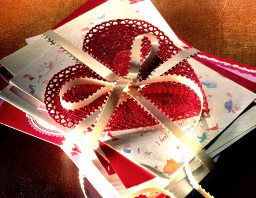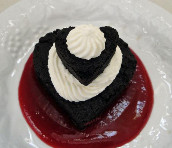 So many people today are looking for love! Did you know that 141 million Valentine’s Day cards are exchanged annually, making Valentine’s Day the second-most popular greeting-card giving occasion, researched by Hallmark, of course. First in card exchanges is Christmas. This total excludes packaged kids valentines for classroom exchanges. Over 50 percent of all Valentine’s Day cards are purchased in the six days prior to the observance, making Valentine’s Day a procrastinator’s delight!
So many people today are looking for love! Did you know that 141 million Valentine’s Day cards are exchanged annually, making Valentine’s Day the second-most popular greeting-card giving occasion, researched by Hallmark, of course. First in card exchanges is Christmas. This total excludes packaged kids valentines for classroom exchanges. Over 50 percent of all Valentine’s Day cards are purchased in the six days prior to the observance, making Valentine’s Day a procrastinator’s delight!
To meet the demands of the greeting card market alone over 312,000 trees (78,000 tonnes of paper) are needed, and that’s just the card, never mind the envelope. Add to that inks, dyes, glues, postage, fuels consumed in manufacturing and distribution, and it seems like madness to continue this tradition at a time where every little bit helps, both environmentally and financially.
So why do we continue this age-old tradition?
Receiving greeting cards is part of our psyche. We don’t send paper cards without good reason; we seldom receive without them meaning something. The have higher emotional value than e-cards, and most people prefer the old-fashioned handwritten card or letter to make them feel truly special. You can still ‘go-green’ by recycling and re-using. Here a few suggestions:
- Buy cards that are made from 100% recycled paper
- Use them as a bookmarks
- Make them into a gift tag by cutting the old card into a smaller shape
- Cut off the side with the picture (if there is no writing on the reverse side) and re-use it as a post card
- Donate to schools and kindergartens, they are a great resource for children’s art
- If you have to dump them, use your recycle bin.
A Valentine’s Day Treat!
 Want something other than chocolate? Try this Raspberry Sauce, good over pancakes in the morning or ice cream after supper!
Want something other than chocolate? Try this Raspberry Sauce, good over pancakes in the morning or ice cream after supper!
Ingredients:
2 pints raspberries
1/2 cup water
3/4 cup sugar
2 tablespoons cornstarch
Directions:
1. Crush the raspberries with water in a saucepan.
2. Add sugar and cornstarch.
3. Bring to a boil, stirring constantly.
4. Reduce heat and simmer 2 minutes.
5. Push through a foodmill or strainer.
